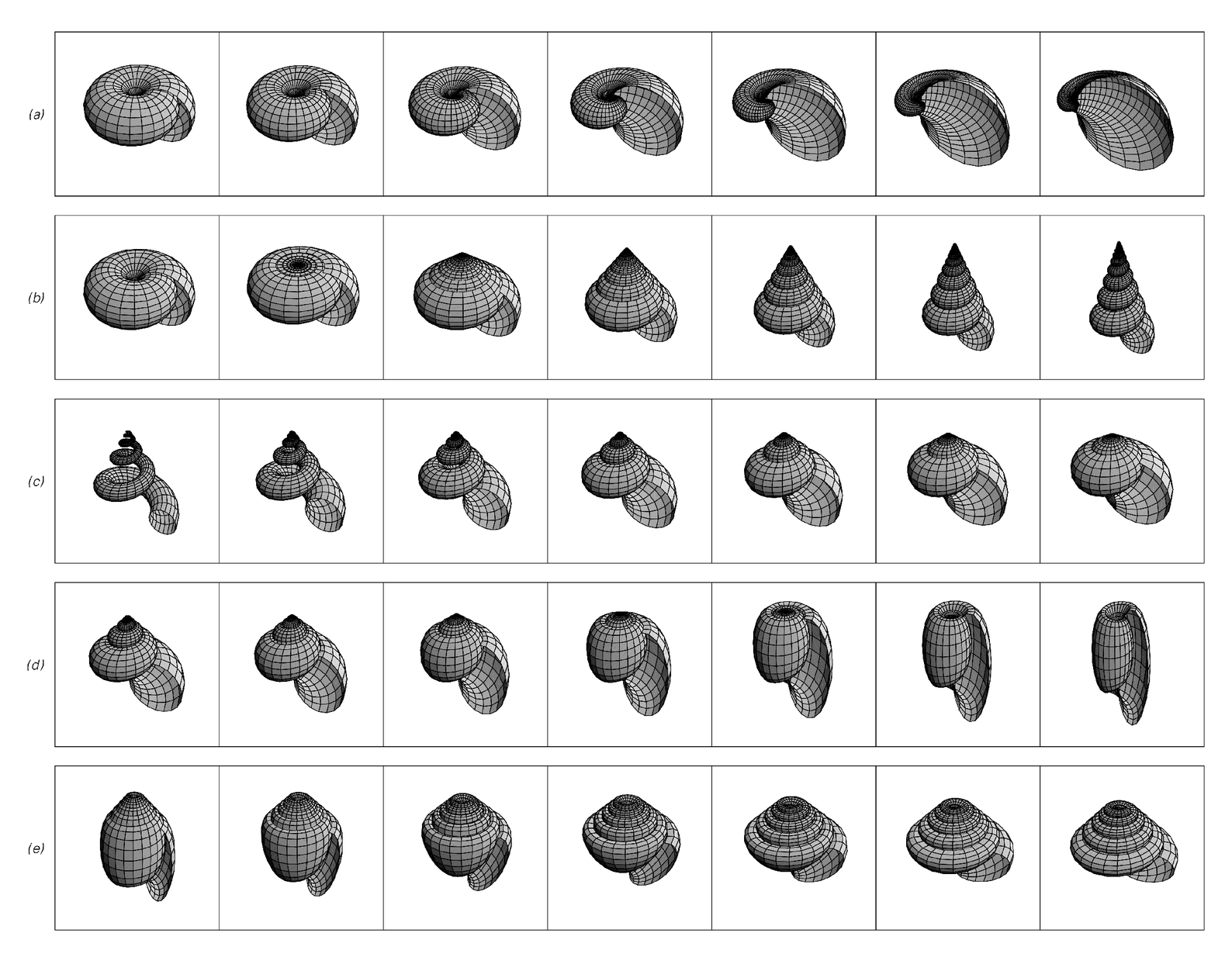So out of all the possible forms, which ones actually occur in real molluscs? The remarkable fact illustrated on the next page is that essentially all of them are found in some kind of mollusc or another.
If one just saw a single mollusc shell, one might well think that its elaborate form must have been carefully crafted by some long process of natural selection. But what we now see is that in fact all the different forms that are observed are in effect just consequences of the

The effects of varying five simple features of the rule for the growth of a mollusc shell: (a) the overall factor by which the size increases in the course of each revolution; (b) the relative amount by which the opening is displaced downward at each revolution; (c) the size of the opening relative to the overall size of the shell; (d) the elongation of the opening; (e) the orientation of elongation in the opening. The pictures at the beginning and end of each row correspond roughly to the following: (a) pond snail shell, cockle shell; (b) pond snail shell, horn shell; (c) worm shell, bonnet shell; (d) periwinkle shell, cowrie shell; (e) olive shell, sundial shell.



